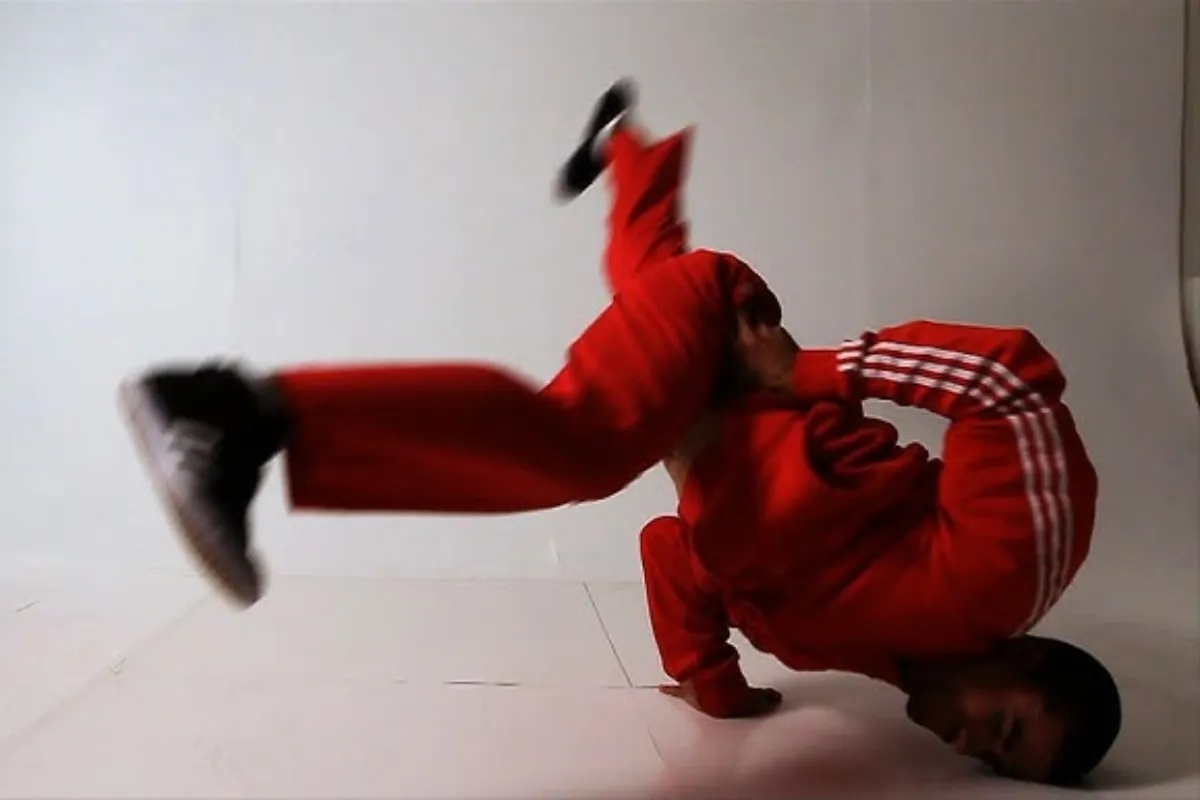In the electrifying universe of breakdancing, top rock serves as the gateway to a mesmerizing array of movements, rhythms, and expressions. As one of the foundational elements of breaking, top rock sets the stage for dynamic performances, captivating audiences with its fluidity, style, and groove. In this expert article, we delve deep into the essence of top rock, exploring its origins, techniques, and significance within the breakdance culture. What is Top Rock in Breakdancing? Let’s explore the fascinating details together in this article with Learn Breakdance.
ORIGINS AND EVOLUTION
What is Top Rock in Breakdancing? Top rock in breakdancing refers to the introductory dance moves performed while standing upright before transitioning into more acrobatic or floor-based maneuvers. It serves as the initial phase of a breakdancing routine, where dancers showcase their style, rhythm, and creativity through a series of steps, gestures, and movements. Top rock typically involves intricate footwork, rhythmic variations, and dynamic transitions, all synchronized with the music’s beat. It sets the tone for the performance, allowing dancers to establish their presence, engage the audience, and build momentum before moving into more physically demanding elements of breakdance like footwork, power moves, and freezes. As a fundamental component of breakdancing, top rock not only demonstrates a dancer’s technical skill but also their ability to interpret music and express themselves artistically within the hip-hop culture.

Top rock traces its roots to the vibrant streets of New York City during the dynamic emergence of hip-hop culture in the 1970s. This era marked a significant cultural revolution, and top rock emerged as a key element within the burgeoning b-boy (breakdancer) community. Influenced by an eclectic mix of dance styles, including salsa, funk, and jazz, top rock evolved into a distinctive form of self-expression and storytelling.
In its early days, top rock was primarily performed as a precursor to the more physically demanding footwork and power moves that followed. It served as an introduction, setting the tone and rhythm for the subsequent dance sequences. However, as breakdancing continued to develop, top rock began to gain recognition as an art form in its own right. Dancers started to explore and expand its potential, incorporating intricate footwork, rhythmic variations, and dynamic transitions that captivated audiences.
This evolution transformed top rock from a simple introductory step into a complex and essential component of breakdancing. Its versatility allowed dancers to showcase their individual styles, creativity, and musicality, making it an integral part of the b-boying repertoire. Today, top rock stands as a testament to the rich history and continuous innovation within breakdance culture, embodying the spirit and energy of hip-hop’s early days while continuing to inspire new generations of dancers.
KEY ELEMENTS OF TOP ROCK

At its core, top rock embodies a fusion of rhythm, style, and individuality, allowing breakers to showcase their creativity and personality through movement. This foundational aspect of breakdancing is more than just a set of steps; it’s a dynamic expression of the dancer’s inner rhythm and artistic vision. Here are some key elements that define top rock:
Footwork Variations
Top rock encompasses a diverse range of footwork patterns, each with its own rhythm, flair, and character. The variety within top rock is extensive, providing breakers with numerous opportunities to experiment and innovate. Basic steps like the Indian step and salsa step serve as building blocks, while more advanced sequences such as the shuffle, kick-outs, and crossovers allow for greater complexity and creativity. Each pattern contributes to the overall aesthetic, enabling dancers to mix and match movements to create unique combinations.
Musicality and Timing
A fundamental aspect of top rock is its synchronization with the music’s beat and rhythm. Breakers must exhibit keen musicality, accentuating each step and gesture to complement the underlying music’s flow. This requires not only an understanding of rhythm but also the ability to interpret and respond to different musical elements. By mastering timing, breakers can elevate their top rock performances from mere movement to a form of artistic expression, where every beat is an opportunity to showcase their connection to the music.
Transitions and Flow
Smooth transitions are essential for maintaining continuity and fluidity in top rock sequences. Breakers should seamlessly transition between different footwork patterns, incorporating pauses, direction changes, and weight shifts to enhance the overall flow and dynamics of their performance. Effective transitions ensure that the performance remains engaging and cohesive, with each move naturally leading into the next. This fluidity is key to keeping the audience captivated and maintaining the energy of the performance.
Style and Expression
Top rock offers breakers a canvas for self-expression and individual style. This element is perhaps the most personal aspect of top rock, as it allows dancers to infuse their movements with their unique identity and artistic vision. Whether channeling the suave finesse of old-school pioneers or incorporating modern influences with contemporary flair, breakers can tailor their top rock movements to reflect their personal style. This customization transforms top rock into a deeply personal form of expression, where the dancer’s personality and creativity shine through each step.
Cultural Significance and Evolution
Top rock is not just a dance technique; it’s a vital part of the cultural fabric of hip-hop. It traces its roots to the streets of New York City during the emergence of hip-hop culture in the 1970s, a time when breakdancing was developing as a form of self-expression and community. Influenced by diverse dance styles such as salsa, funk, and jazz, top rock evolved as a means of storytelling within the b-boy community. Over time, it has gained recognition as an art form in its own right, characterized by intricate footwork, rhythmic variations, and dynamic transitions.
Top rock stands as a testament to the rich history and continuous innovation within breakdance culture. It encapsulates the spirit of hip-hop, offering a blend of tradition and modernity that continues to inspire new generations of dancers. Whether you’re a seasoned b-boy or a newcomer to the scene, mastering top rock provides a foundation upon which to build your breakdancing skills, allowing you to explore the depths of your creativity and connect with the vibrant legacy of hip-hop dance.
TECHNIQUES FOR MASTERY

Achieving mastery in top rock requires dedication, practice, and a deep understanding of technique. Here are some expert tips to enhance your top rock performance:
Focus on Fundamentals
Mastering the basics is crucial. Begin with foundational footwork patterns and transitions, such as the Indian step, salsa step, and shuffle. Concentrate on establishing a strong sense of rhythm, balance, and coordination. These elements are the building blocks upon which more complex variations can be developed. As you become proficient in these basic moves, you’ll create a solid foundation that will support more advanced techniques.
Embrace Musicality
Developing a keen ear for music and rhythm is essential for any breaker. Listen to a wide variety of genres and styles to understand different rhythmic patterns and accents. Practice identifying these patterns and incorporate them into your top rock sequences. This will not only enhance your musicality but also your ability to express yourself through your movements. The more you connect with the music, the more dynamic and engaging your top rock performance will be.
Study the Masters
Learning from those who have mastered the art is invaluable. Watch videos of renowned breakers and analyze their top rock performances. Pay close attention to their technique, style, and stage presence. Notice how they transition between moves and how they use their body to express rhythm and emotion. By studying these elements, you can gain inspiration and insight into how to refine your own style. Incorporate elements that resonate with your artistic sensibilities to create a unique top rock style.
Experiment and Innovate
Innovation is key to standing out in the world of breakdancing. Don’t be afraid to experiment with new footwork patterns, transitions, and styling techniques. Push the boundaries of your creativity by exploring different rhythms, tempos, and musical genres. This experimentation will not only expand your repertoire but also help you discover your unique style. The more you innovate, the more you contribute to the evolution of top rock and breakdancing as a whole.
Consistent Practice
Dedication and consistent practice are essential for mastering top rock. Set aside regular time for focused practice sessions, where you can work on perfecting your technique and experimenting with new moves. Practice in front of a mirror or record your sessions to analyze your form and identify areas for improvement. Consistency will help you build muscle memory and refine your skills over time.
Seek Feedback and Perform
Sharing your top rock with others and seeking feedback is a great way to improve. Perform in front of friends, fellow dancers, or even at local events. Constructive criticism can provide valuable insights and help you identify areas for growth. Additionally, performing in front of an audience will boost your confidence and stage presence, essential components of a compelling top rock performance.
Stay Inspired and Motivated
Lastly, staying inspired and motivated is crucial for continuous improvement. Surround yourself with other dancers who share your passion for breakdancing. Participate in workshops, battles, and dance events to stay connected to the community and to keep learning. Watching performances and staying up-to-date with the latest trends in breakdancing can also fuel your creativity and drive to improve.
3 Tips To Create Variations

Here are three tips to create variations in your dance moves:
- Foot Placement: Experiment with placing your feet in different positions to create unique shapes and dynamics with your steps. The way you position your feet can drastically alter the visual impact of your movements.
- Additional Steps: Introduce an extra step before, between, or after your original sequence. This adds complexity and unpredictability to your dance, keeping your audience engaged and surprised.
- Twisting and Spinning: Incorporate twisting, spinning, or fake twists into your movements. These techniques not only add flair but also change the rhythm and feel of your steps, injecting freshness into your performance.
Top rock embodies the vibrant tapestry of movement, culture, and history inherent in breakdancing. By immersing oneself in its rhythmic complexities, stylistic nuances, and expressive possibilities, dancers can transcend boundaries and reach new heights of artistic excellence. So, lace up your sneakers, let the music course through your veins, and allow the rhythm of top rock to lead you on an exhilarating journey of self-discovery and mastery within the dynamic realm of breakdance.


Leave a reply